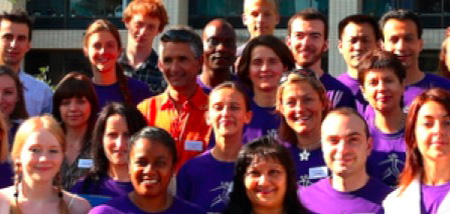24th August 2021 – by Emily Stevens

During the first UK lockdown in March 2020, two nurses and four research practitioners planned their days with military precision. They were under immense time pressure, for if they did not return in time, they would lose their window of opportunity. They had to receive special dispensation to drive across the country. With difficulty, they had managed to obtain PPE from a handful of suppliers and the NHS.
Their mission? Groundbreaking research on COVID-19, detectability, antibodies and immune response with six hundred twins.
New rules of engagement
TwinsUK, operating from the Department of Twin Research at King’s College London, was short-staffed during the first lockdown because some clinic team staff members were deployed elsewhere in St Thomas’ Hospital where they were needed more urgently.
“How would we do it? Would the twins be comfortable with us visiting them in their own environment?” asked Clinical Operations Manager Alyce Sheedy, of the daunting task.
It was both a mathematical puzzle and a tactical operation. Between the first blood draw and returning to the lab, there were only six hours before the samples would lose viability.
In an 85-mile radius from St Thomas’ Hospital, from Southampton to Suffolk to Northampton to Kent Downs, the team were seeing an average of 26 twins each day. They accomplished this by hiring three cars and travelling in pairs. The team went to the most distant household of the day first and then continued to homes closer to the hospital.
Each pair of practitioners averaged eight home visits per day, driving throughout London and the south of England every day. In six weeks they reached over 500 twins for the first antibody study.
The twins they visited were either asymptomatic or had previously reported symptoms and had completed their isolation period. The team did nose and throat swabs to test for COVID infection. The initial antibody study took blood for antibody and T-cell testing, stool to see if the virus was detectable in stool and long-term viral shedders, and they took urine and saliva samples. Twins who tested positive for antibodies were visited again 6-8 weeks later, as was their co-twin.
250 of the initial 512 were visited again, and 52 twins were seen for T-cell blood tests, some which were repeat visits, and others who were being visited for the first time. 32 of the T-cell group were seen yet another time, and in April of 2021, 150 of the original 512 were seen again.

Working from home
Before the lockdown the twins participating in TwinsUK’s longitudinal cohort study had been coming in to St Thomas’ for medical examination and collection of samples, so the twins and practitioners were used to seeing each other in that context, but the home visits were different.
“Being used to seeing twins in clinic environment, it was nice to see them in their own environment – it added another dimension to everything,” Alyce Sheedy observed.
The twins were welcoming, excited to be a part of the research and to join in the collective effort of investigating and battling COVID 19. They offered snacks and drinks and bathroom usage, which was especially important during the first lockdown when businesses were closed, and toilets were far and few between. The nurses and research practitioners were able to answer questions the twins had and ‘reassure and alleviate fears, which was a good feeling’, Alyce Sheedy recalled.
For some twins, the nurses and research practitioners were the only physical contact from outside that they had during lockdown, so it allowed for some company in person.
Sheedy described a moment on a return visit in August of 2020 when a twin was having a cul-de-sac neighbourhood party, and as the visiting team left, kitted out in PPE, applause erupted across the neighbourhood.
“It really showed that the twins were really appreciative of all the work we were doing on the COVID frontline.”







